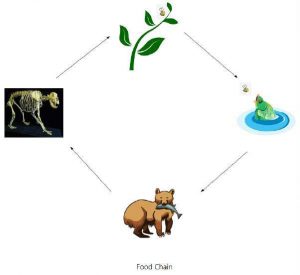1. Read Aloud
1. Chasing the Flame
– 16 January 2021 @Canberra, Australia
Yet it is precisely in observing the intertwinings of success and failure that Chasing the Flame makes its greatest mark. With piercing insight and relentless logic, it reveals the pitfalls of international politics and details an intricate struggle between individual and institution. It haunts us with the poignant truth that even a great man can do only so much to reinvent the world.
2. Microscopic Invaders
– 4 January 2021 @Wellington, New Zealand
We all know about bacteria, viruses and microscopic protozoa. We can watch the way that these tiny agents move into our bodies and damage our organs. We have a growing understanding of how our body mounts defensive strategies that fight off these invaders, and have built some clever chemical that can help mount an assault on these bio-villains
3. Executive Order
– 31 December 2020 @Beijing, China
But on May 3, a couple of weeks later, Lincoln issued an executive order calling for 43,000 three-year volunteers for the army, and also increasing the size of the regular army and navy by 40,000 men. Both of these actions were in apparent violation of the constitution.
4. Scientific Evidence
– 10 January 2021 @Taipei, China Taiwan
The latest scientific evidence on the nature and strength of the links between diet and chronic diseases is examined and discussed in detail in the following sections of this report. This section gives an overall view of the current situation and trends in chronic diseases at the global level.
2. Describe Image
Internet Users (7 January 2021 @Melbourne, Australia)

Rhino Distribution (11 January 2021 @ Beijing, China)

A Food Chain (13 January 2021@ Jinan, China)

3. Summarize Written Text
Electric Vehicle (8 January 2021 @ Hong Kong, China Hong Kong)
Here’s a term you’re going to hear much more often: plug-in vehicle, and the acronym PEV. It’s what you and many other people will drive to work in, ten years and more from now. At that time, before you drive off in the morning you will first unplug your car – your plug-in vehicle. Its big on board batteries will have been fully charged overnight, with enough power for you to drive 50-100 kilometres through city traffic.
When you arrive at work you’ll plug in your car once again, this time into a socket that allows power to flow form your car’s batteries to the electricity grid. One of the things you did when you bought your car was to sign a contract with your favourite electricity supplier, allowing them to draw a limited amount of power from your car’s batteries should they need to, perhaps because of a blackout, or very high wholesale spot power prices. The price you get for the power the distributor buys form your car would not only be most attractive to you, it would be a good deal for them too, their alternative being very expensive power form peaking stations. If, driving home or for some other reason your batteries looked like running flat, a relatively small, but quiet and efficient engine running on petrol, diesel or compressed natural gas, even biofuel, would automatically cut in, driving a generator that supplied the batteries so you could complete your journey.
Concerns over ‘peak oil’, increasing greenhouse gas emissions, and the likelihood that by the middle of this century there could be five times as many motor vehicles registered world-wide as there are now, mean that the world’s almost total dependence on petroleum-based fuels for transport is, in every sense of the word, unsustainable.
4. Summarize Spoken Text
Stone Balls (14 January 2021 @ Chengdu, China)
I suppose you wouldn’t expect perhaps to find a mathematician in a museum of historical objects, but actually, the objects that I’ve been drawn to in this museum have quite a lot of mathematical significance. These Neolithic stones, discovered in Scotland, dating back 5,000 years, are probably the first examples of humans exploring the concept of symmetry. And that’s what I do as a practicing mathematician. I spend my life trying to understand what symmetries are possible, in nature and in mathematics and abstractly. And here I’ve got a connection, going back 5,000 years, to people who are already trying to understand – how can I arrange patches on the side of these stone balls in a symmetrical manner? One of the intriguing things about these stones is that we don’t actually know what they’re for. They might have been for divination –trying to predict the future. They might have been part of a game. They look very much like dice, but we don’t really think there is any game associated with them. Maybe they were just for chucking around, they’re very nice in the hand when you hold them.
Or maybe they were symbols of power in the clan. I suppose that’s why I like them because we don’t really know what they are. If I had a theory about why they were doing this it would be that actually, they were starting to be mathematicians, and that here we see the first example of abstract thought at work. That these weren’t for a purpose. Mathematics is a great subject, created a lot of the technology around us, but mathematicians we create our mathematical objects for the joy and the beauty, so it will be lovely to think that these didn’t actually have a use, that they were just really a celebration of what’s possible.
More Real PTE Questions for January 2021?
Get start with signing up with PTE BANK!
Step 1: Register an account
Step 2: Choose your perfect PTE Exam Package
Step 3: Go to “My Account”, click on “download” to get PTE preparation materials




